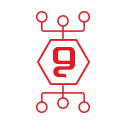How to plan a production setup upgrade
Upgrading the production system - the checklist, step by step!
Planning a production setup helps to identify potential challenges, minimize downtime, estimate costs accurately and reduce risks associated with change.
Effective planning allows organizations to maintain operational continuity, optimize resources and avoid unexpected problems that may affect productivity and functionality.
Business requirements:
Resource utilization: Checking of an existing situation
- The leading companies, such as Dell and HP, have tools that sample the environment.
- It is important to run the tools for 5 days of activity to get a real picture.
- The results of the report will provide a lot of information on a large number of aspects concerning the use of environmental resources.
- The results can be used by you to choose solutions other than the selected VENDOR.
Strategic need: Adjustment of the solution to the business requirements.
- In order for the production line to match the business requirements, first it must be checked with the company's management whether there are expected business changes that may affect the structure of the production line.
- An example of a business need could be the introduction of a new information system, something that directly affects the planning of the system.
Storge selection - the process of selecting the storage:
- When choosing a storage system for a production environment, factors such as performance, scalability, reliability and data protection must be taken into account.
- The choice of storage is based on an examination of the set of resources that appear in the VENDOR's analysis tools, together with an organizational strategy.
- One of the most important parameters in choosing storage is the amount of IO (write/read speed), a parameter that will directly affect the system's performance. O comes from the mornings.
In order to allow growth of the environment in terms of resources, it is important to analyze the future business requirements.
Choosing Storge - it's important to know:
- It is recommended to always leave a free space for CDs in storage for volume, because the addition of a drawer with discs may reach tens of thousands of shekels.
- Another important parameter is the ability to compress the data, there are storages that enable a compression mechanism, which means that the volume you purchased will be X, but due to the compression mechanism you will receive X times 3 on average.
- When calculating the volume, you should take into account that the compression mechanism does not work with music, video and image files
Selection of servers - hardware selection process:
- The servers are the ones that will provide the resources for the virtual machines.
- The resource check can be based on the VENDOR's resource analysis tool or alternatively on the RV-tools file (a tool that provides comprehensive information on virtual machines)
- The choice of servers (HOSTs) is critical to the success of the project, since an underestimation of resources will lead to a lack of performance and an inability to respond to business requirements.
Choosing servers - it's important to know:
- There is planning to upgrade operating systems, upgrading information systems or any other change in the virtual environment, can and will lead to an increased consumption of resources and must be prepared for this.
Microsoft Licensing - Operating Systems Licensing:
- Microsoft licensing is calculated according to the amount of physical COREs on the server and not the amount of COREs assigned to a virtual machine.
- In the vast majority of cases, even if the customer already has a license in the current environment, it is likely that he will not cover the new environment since it can be estimated that the amount of CORE in the new environment will increase.
Example of licensing calculation:
The client has three HOSTs, each HOST has two 8 CORE processors.
As part of replacing the production environment, the customer wants to upgrade his CPU performance.
The customer decides to upgrade the processors to 16 CORE per unit.
This means that even if the customer had witnessed his licensing, he will agree to double the amount of licenses, which may reach tens of thousands of shekels.
How to reduce expenses in purchasing windows server licensing
- Choose processors that will allow growth but not beyond what is necessary.
- They check how many virtual machines will be created at the end of the process and then decide whether there is a need for data center licenses that allow the creation of unlimited machines or individual licenses.
- Examining the differences between ROK licensing and MOLP licensing - ROK licensing is significantly cheaper but will arrive in boxes that must be kept. MOLP licensing is registered with Microsoft and easier to manage.
Microsoft licensing is important to know:
- Loss of the ROK license (box) will result in the loss of the license and it will not be possible to receive a copy, not even with an invoice
SQL Licensing: Purchase SQL licensing that matches the environment:
- SQL is a database that the popular off-the-shelf software (applications) in Israel use to store data.
- There are two main commercial editions of Microsoft SQL Server Enterprise Edition and Standard Edition.
- Some of the popular software in Israel are: Priority, SAP, and Hashshab.
SQL licensing: important to know:
- The SQL licensing cost is calculated according to the amount of CORE assigned to that virtual machine that was set up. This means that the CORE allocation should be according to the requirements of the software house and nothing more. Over-allocation will unnecessarily increase the expenditure for the license.
- There are fundamental differences between Enterprise Edition and Standard Edition licensing. which can affect performance, information security and more.. It is recommended to involve a DBA person or another person with knowledge in the field, before choosing the type of licensing.
Software houses: compatibility of the software with the new computing environment.
- Does the software in its current version support the selected operating system.
- What is the cost to reinstall the software
- If it is necessary to upgrade a version, this can involve considerable costs and therefore it is worth preparing.
- Does the software upgrade require more resources than what has been allocated so far?
Software houses: important to know:
- In order to avoid unplanned high costs, it is necessary to work closely with the software houses even at the stage of planning the upgrade of the production system.
VMware licensing: platform for running the virtual machines:
VMware's primary product is VMware vSphere, a virtualization platform that enables organizations to create and manage virtual machines (VMs).
vSphere Essentials:
- Designed for small businesses with basic virtualization needs.
- Supports up to 3 hosts with 2 CPUs each.
- Includes vCenter Server Essentials for central management.
- Lacks advanced features like vMotion and high availability
vSphere Essentials Plus:
- Adds features like vMotion and HA that are critical for customers looking for a storage array and remnant servers.
- Suitable for small and medium businesses that need virtualization with improved availability.
- Supports up to 3 hosts with 2 CPUs each.
vSphere Standard:
- Suitable for medium businesses with more advanced virtualization requirements.
- Suitable for organizations whose production setup is based on a minimum of 4 hosts
vSphere Enterprise plus:
- Provides the full range of vSphere features suitable for large enterprises.
- Offers advanced capabilities such as: VMware Distributed Resource Scheduler (DRS): monitors the use of resources, including CPU and memory, and automatically moves virtual machines (VMs) between hosts to ensure optimal deployment of resources.
- This function helps avoid performance bottlenecks and improves overall system efficiency, especially in scenarios with variable workload requirements.
In conclusion:
Planning a production system is a complex process that contains many components and variables that only after careful examination at the business level and at the technical level, will it be possible to give a proper and complete answer.
Planning that will be done in depth, will take into account all variables and costs will provide the organization with an answer to current and future business requirements and will result in a stable system, survival and without unexpected costs
The author: Zabri Idan, VP of expert services and information security at Genie
You may be interested in:

אירוע משפחות סוף קיץ 2025


פישינג בעסקים: איך לזהות, למנוע ולהגיב נכון


החשיבות של סריקות פגיעויות באבטחת סייבר






